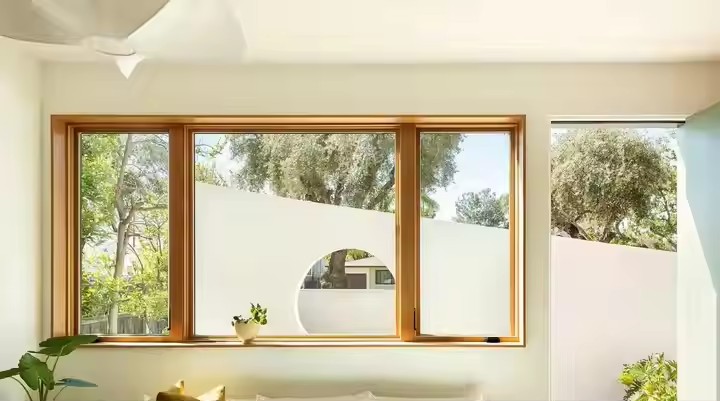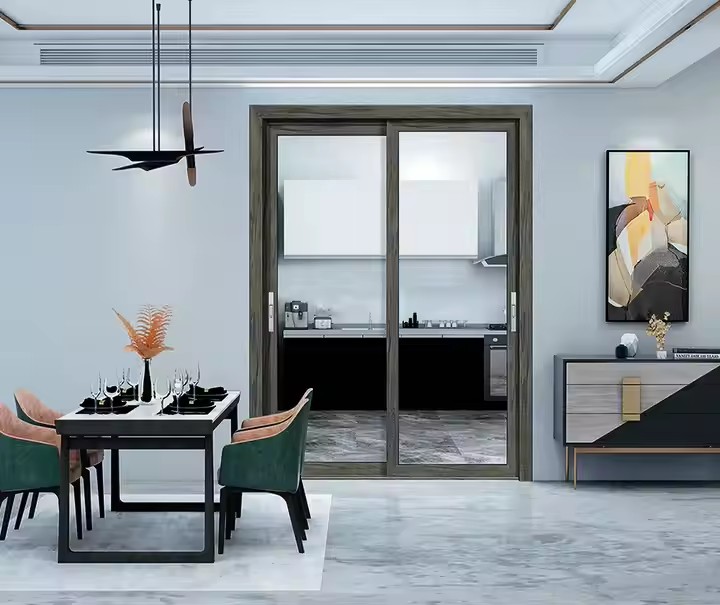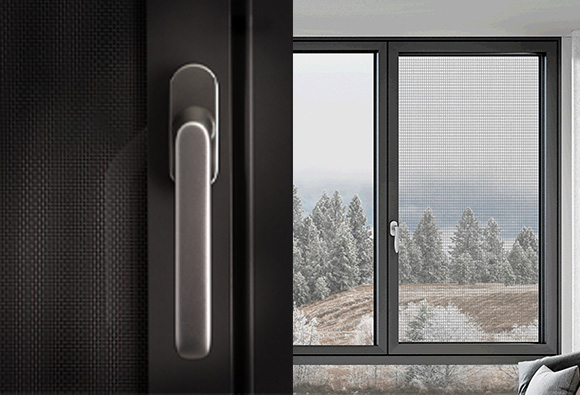Adapt to Climate Conditions
Thermal Insulation: Australia has a diverse climate—hot summers in some regions and cold winters in others. Therefore, folding doors should use materials with excellent insulation properties, such as thermally broken aluminum profiles. The thermal break in the middle effectively blocks heat conduction. Insulated glass units filled with inert gas further enhance thermal performance, reduce energy consumption, and help maintain a comfortable indoor temperature. Thermal insulation is a critical requirement in Australia, especially in colder regions where it may snow during winter.
Ventilation: In hot areas, good airflow is essential. Folding doors should allow full opening to enable rapid indoor-outdoor air circulation. Designs with multiple panels that fold to the side can maximize ventilation. Adding insect screens helps keep bugs out while maintaining airflow. Ventilation is one of the most important functions of folding doors, as it keeps indoor air fresh and improves overall comfort.
Water and Moisture Resistance: Many Australian regions are coastal and experience high humidity and occasional heavy rain. Folding doors should include waterproof design features. Seals should be applied at the joints between door frames and panels, and drainage channels at the bottom should be installed to divert rainwater, preventing indoor leakage. In snowy winters, accumulated snow also necessitates effective waterproofing. Chinese folding doors typically excel in moisture resistance.

Integrate with Architectural Styles
Modern Minimalist Style: Many modern Australian buildings feature clean lines and geometric forms. Folding doors can be designed with slim or frameless profiles and large glass panels to create a spacious, open visual effect that matches minimalist architecture. Recessed track systems can ensure a flush floor finish, enhancing the simplicity of the design. Contemporary preferences favor minimalistic aesthetics—simple yet elegant.
Traditional Style: For homes with heritage architecture, such as colonial-style residences, folding doors can incorporate traditional elements. Wooden materials, decorative lines, and carvings evoke a classic look. Color choices like natural wood tones or deep hues enhance traditional charm. Mullioned glass can also be added to reflect historical design styles.
Address Safety Requirements
Fire Resistance: Given Australia’s vast forest areas and high bushfire risk, folding doors should offer some level of fire protection. Fire-rated glass or fire-treated wood can be used, and hardware should be flame-retardant to improve safety during emergencies.
Security: To ensure household safety, folding doors must feature reliable locks and anti-theft systems, such as multi-point locking mechanisms that increase resistance to forced entry. Frames and panels should be robust—preferably made from high-strength aluminum or steel—to prevent damage from external forces.
Safety Glass: Use safety glass such as tempered or laminated glass. These materials won’t shatter into sharp fragments, reducing injury risk. For homes with children or pets, applying safety film to the glass can offer added protection.
Emphasize Energy Efficiency and Sustainability
Energy-Efficient Glass: Choose glass with Low-E (low emissivity) coatings to reflect solar radiation and reduce heating and cooling demands. Depending on the region’s sunlight exposure, glass with appropriate visible light transmittance and solar heat gain coefficients should be selected for optimal energy performance.
Eco-Friendly Materials: Prioritize sustainable materials in construction. Options include certified green building materials or responsibly sourced timber, aligning with Australia’s environmental standards and commitment to sustainability.
Optimize Space Utilization
Space Saving: Since folding doors fold to one side when opened, their storage space should be carefully considered. The number and size of panels must be tailored to the installation site to avoid occupying too much space. In smaller areas such as balconies or compact rooms, outward-folding designs can help conserve interior space.
Flexible Space Division: Folding doors can flexibly separate indoor and outdoor areas or divide interior functional spaces. For instance, they can connect the living room and courtyard—fully opening them merges the spaces for greater usability; closing them restores separate, private zones.
Reflect Cultural Aesthetics
Multicultural Integration: Australia is a multicultural country. Folding door designs can incorporate cultural elements from various backgrounds. In communities with strong Asian influences, traditional Chinese or Japanese design features—like latticework or wood slats—can be integrated to create a culturally rich atmosphere.

Natural Inspirations: Australians value nature deeply. Folding door designs can reflect this by incorporating natural motifs—such as printed leaf or floral patterns on glass, or carved landscape textures on frames—blending architecture with the surrounding environment and expressing respect for nature.
Ensure Ease of Use
Smooth Operation: High-quality tracks and hardware should be installed to ensure folding doors open and close smoothly, without jamming or making noise. Tracks should be regularly cleaned and lubricated to extend their lifespan.
User-Friendly Design: Handles should be ergonomically designed for comfortable grip and easy operation. For large folding doors, consider electric or semi-automatic systems that allow opening and closing via remote control or button—more convenient and effortless for users.

